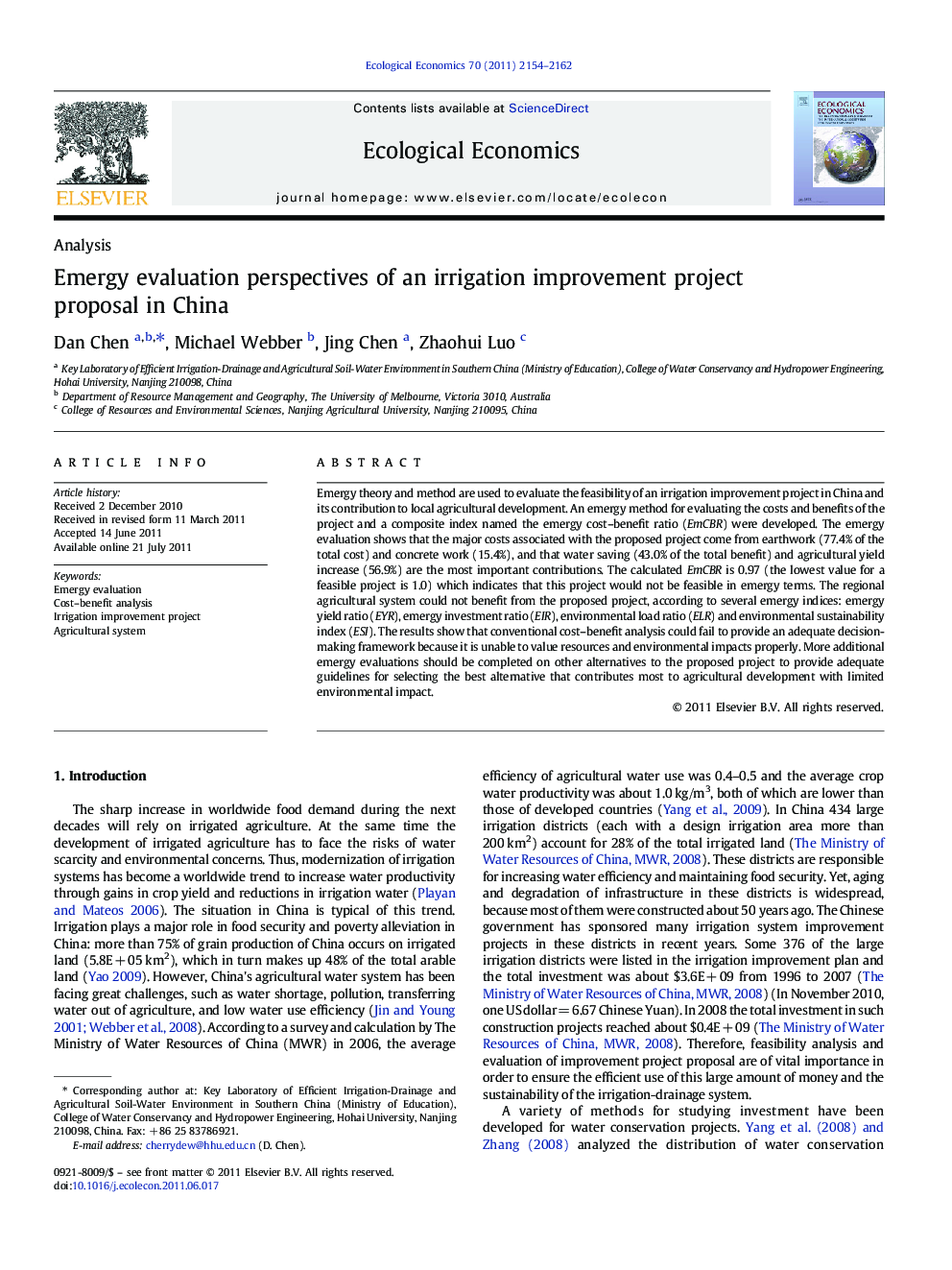| کد مقاله | کد نشریه | سال انتشار | مقاله انگلیسی | نسخه تمام متن |
|---|---|---|---|---|
| 5050582 | 1371093 | 2011 | 9 صفحه PDF | دانلود رایگان |

Emergy theory and method are used to evaluate the feasibility of an irrigation improvement project in China and its contribution to local agricultural development. An emergy method for evaluating the costs and benefits of the project and a composite index named the emergy cost-benefit ratio (EmCBR) were developed. The emergy evaluation shows that the major costs associated with the proposed project come from earthwork (77.4% of the total cost) and concrete work (15.4%), and that water saving (43.0% of the total benefit) and agricultural yield increase (56.9%) are the most important contributions. The calculated EmCBR is 0.97 (the lowest value for a feasible project is 1.0) which indicates that this project would not be feasible in emergy terms. The regional agricultural system could not benefit from the proposed project, according to several emergy indices: emergy yield ratio (EYR), emergy investment ratio (EIR), environmental load ratio (ELR) and environmental sustainability index (ESI). The results show that conventional cost-benefit analysis could fail to provide an adequate decision-making framework because it is unable to value resources and environmental impacts properly. More additional emergy evaluations should be completed on other alternatives to the proposed project to provide adequate guidelines for selecting the best alternative that contributes most to agricultural development with limited environmental impact.
Research Highlights⺠We developed an emergy method for evaluating the costs and benefits of an irrigation improvement project. ⺠A composite index named the emergy cost-benefit ratio (EmCBR) is developed. ⺠We identified the project's infeasibility and negative contributions to local agricultural development. ⺠A mechanism for incorporating emergy analysis in policy decision-making for water conservation projects in China is recommended.
Journal: Ecological Economics - Volume 70, Issue 11, 15 September 2011, Pages 2154-2162